What surveys are available in CaseKeepers? How are they used?
CaseKeepers currently has five surveys available for use:
1) Did you take your medication today?
2) Did you do your exercise today?
3) What is your anxiety level?
4) How many hours did you sleep?
5) What is your mood right now?
Let's view each one.
Did you take your medication today?
This survey presents the client with a simple "Yes / No" response page:
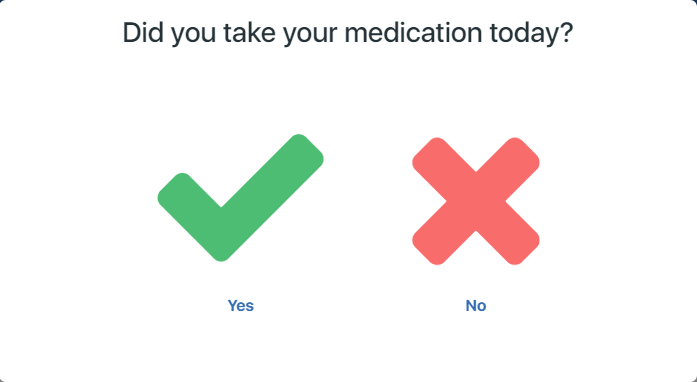
This response page appears on the client's mobile device or desktop (as long as the client is logged into CaseKeepers).
At any time (whether the survey is active or inactive), you can view the client's responses by going into the client's record, cilck on Surveys in the left column ,,,
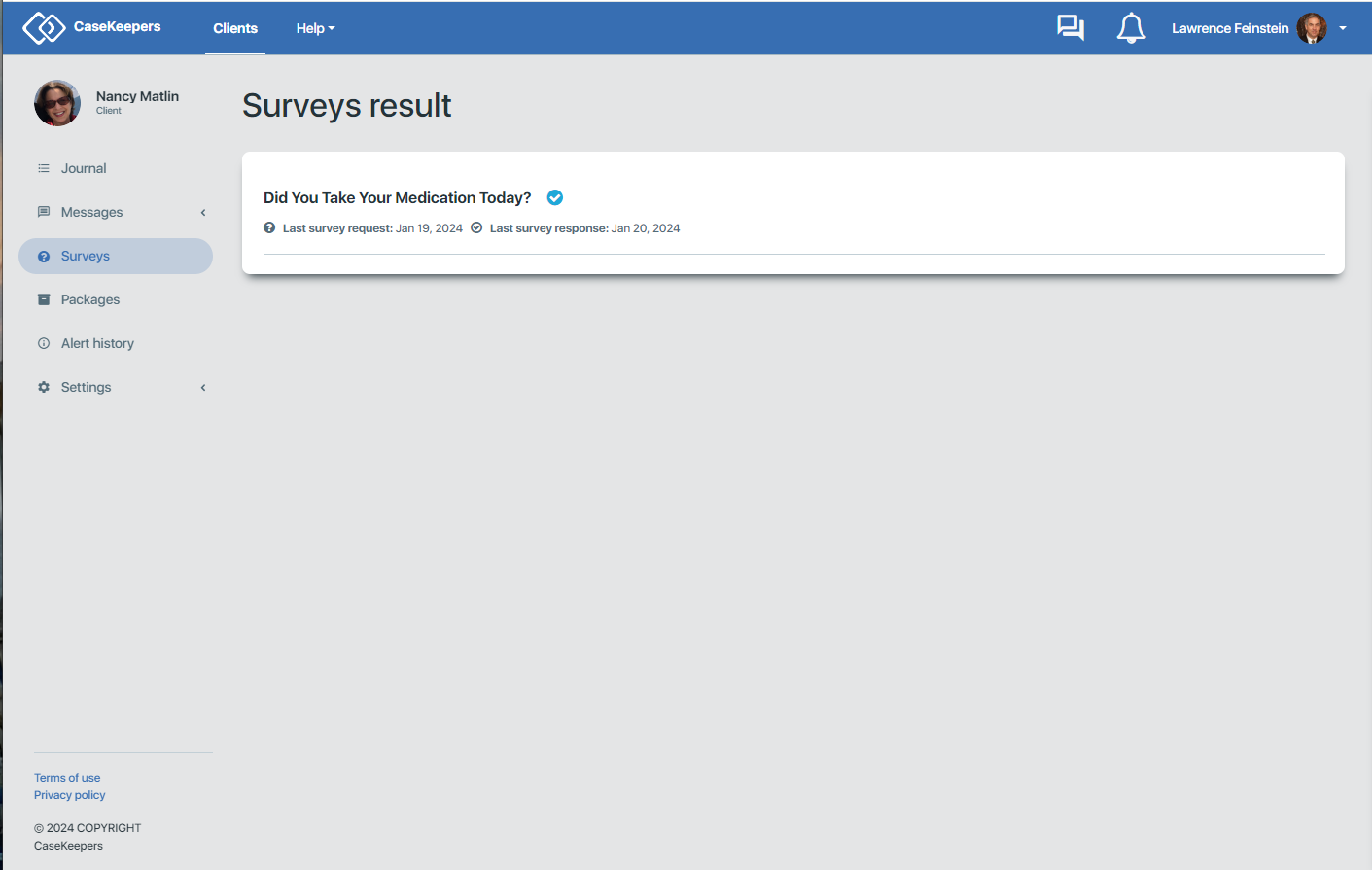
.., then click on the survey record you want to see (here, "Did You Take Your Medication Today?").
CaseKeepers will display a graph of the client's responses, and a list of the responses in chronological order.
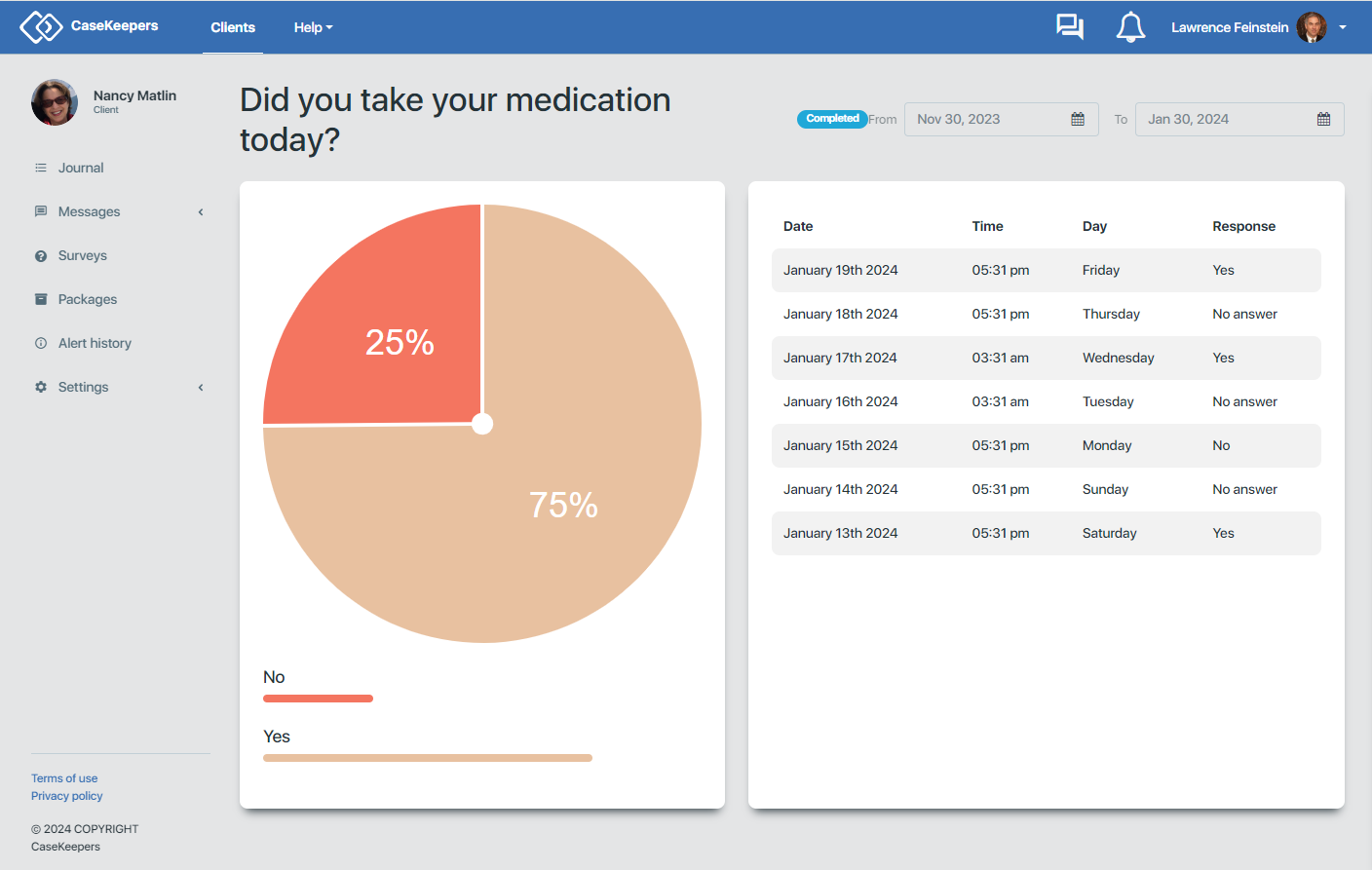
To restrict the data-view to a particular date range, set the date range using the date fields in the upper right of the page.
Did you exercise today?
This survey presents the client with the same "Yes / No" response page:
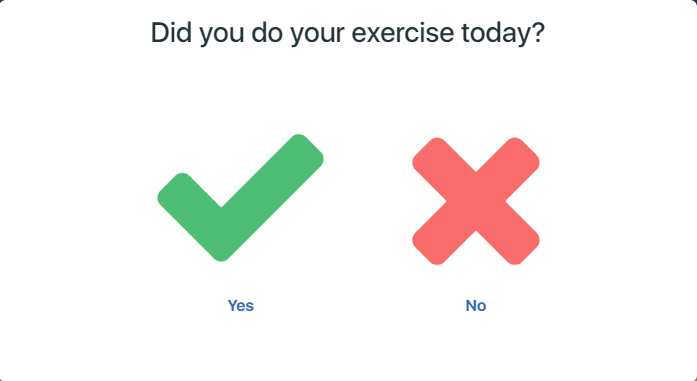
Presentation of the client's responses is similar:
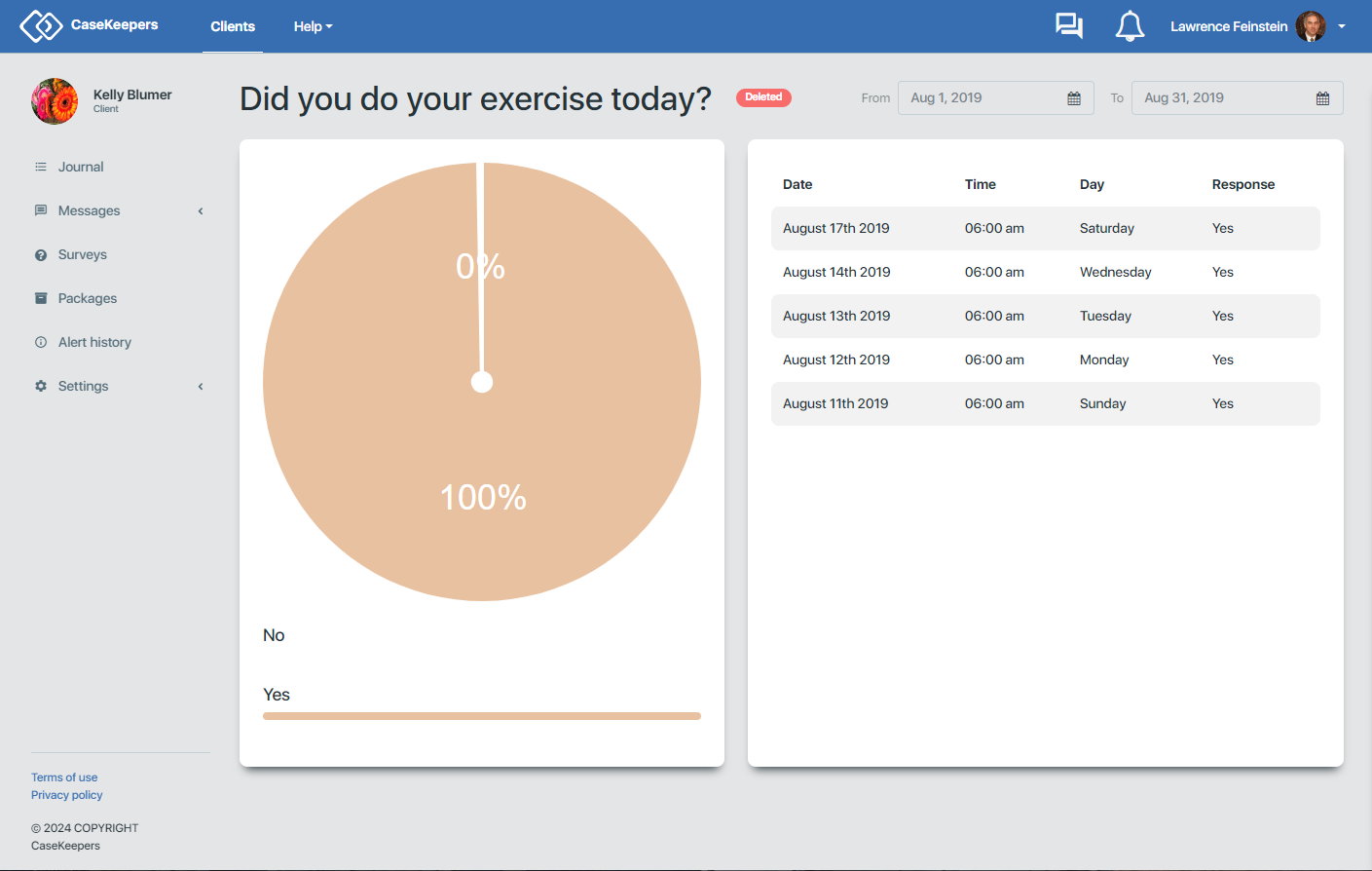
Note that you can use this survey or the previous one to ask the client to report on any variable that requires a Yes/No response. For example, you can ask the client to report whether she completed a task, meditated for 15 minutes, or engaged in a social interaction during the week. To do this, ask the client to "pretend" that the survey is asking what you want to know (for example, Did you meditate today?) and use the Yes/No response to submit her answer. If needed, the survey can be set to ask the client to respond multiple times a day, on different days of the week, or on specific days of the month.
What is your anxiety level?
This survey presents the client with a slider to select a number between 0 and 10. The slider goes to discrete number values (e.g., 6) and not partial values (e.g., 6.5). The client will use the slider to select a value, then click Submit.
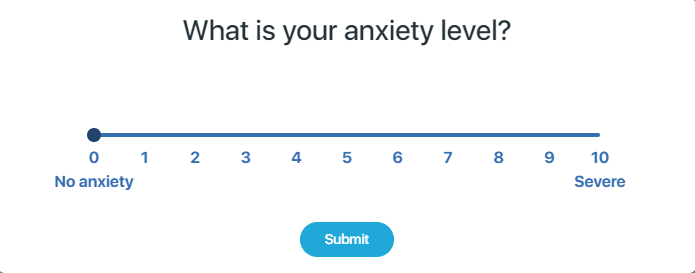
Presentation of the client's responses shows a graph of the responses over the active date range of the survey, and a list of the client's responses by date.
*** PASTE IMAGE OF GRAPH HERE ***
Note that you can use this survey to ask the client to report on any variable that requires a Likert scale response with a 0 to 10 response scale. For example, you can ask the client to report on her pain levels with 0 being "no pain" and 10 being "extreme pain". To do this, ask the client to "pretend" the survey is asking about the desired issue, and to use the slider to report her pain level. If needed, the survey can be set to ask the client to respond multiple times a day, on different days of the week, or on specific days of the month.
How many hours did you sleep?
This survey presents the client with a slider to select a number between 0 and 12. The slider goes to discrete number values (e.g., 6) and not partial values (e.g., 6.5). The client will use the slider to select value, then click Submit.
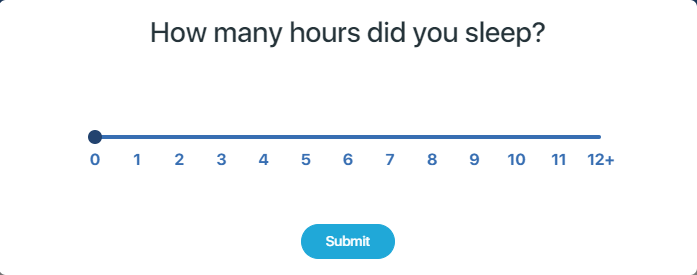
Presentation of the client's responses shows a graph of the responses over the active date range of the survey, and a list of the client's responses by date.
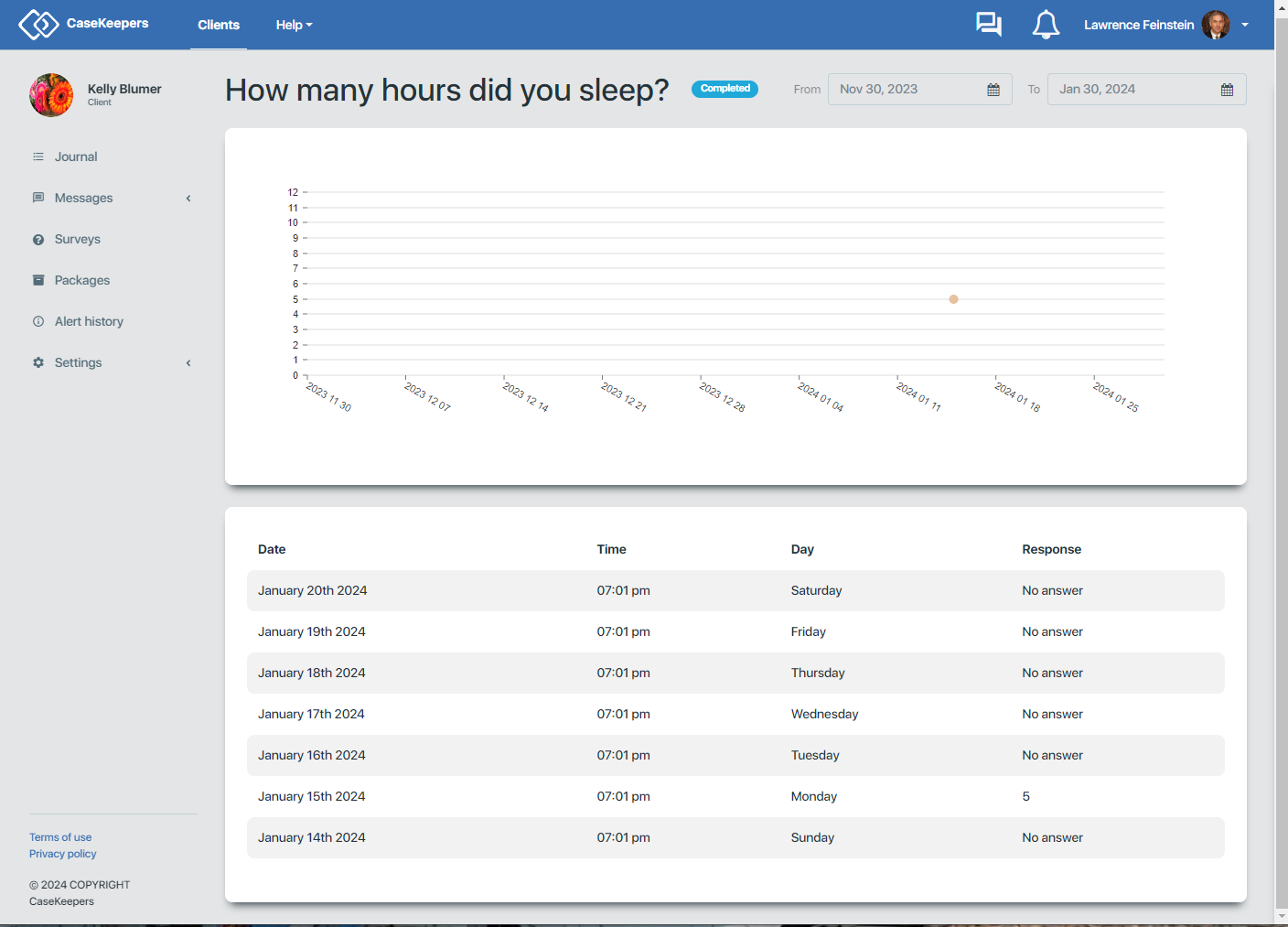
Note that you can use this survey to ask the client to report on any variable that requires a 0 to 12 Likert scale response. For example, the same survey can be used to assess pain levels. To do this, ask the client to use the slider to report his/her pain level between 0 and 10. If needed, the survey can be set to ask the client to respond multiple times a day, on different days of the week, or on specific days of the month.
What is your mood right now?
This is the most sophisticated of the surveys. It is used to track depression and bipolar condition. Below is an image of the response page that is presented to the client. The responses from left to right are Depressed, Sad, Neutral, Happy, and Very Happy (i.e., ecstatic, euphoric, or hypomanic).

The client will touch one of the faces to select that mood, and the response will be stored in his/her record.
Presentation of the client's responses shows a graph of the responses over the active date range of the survey, and a list of the client's responses.
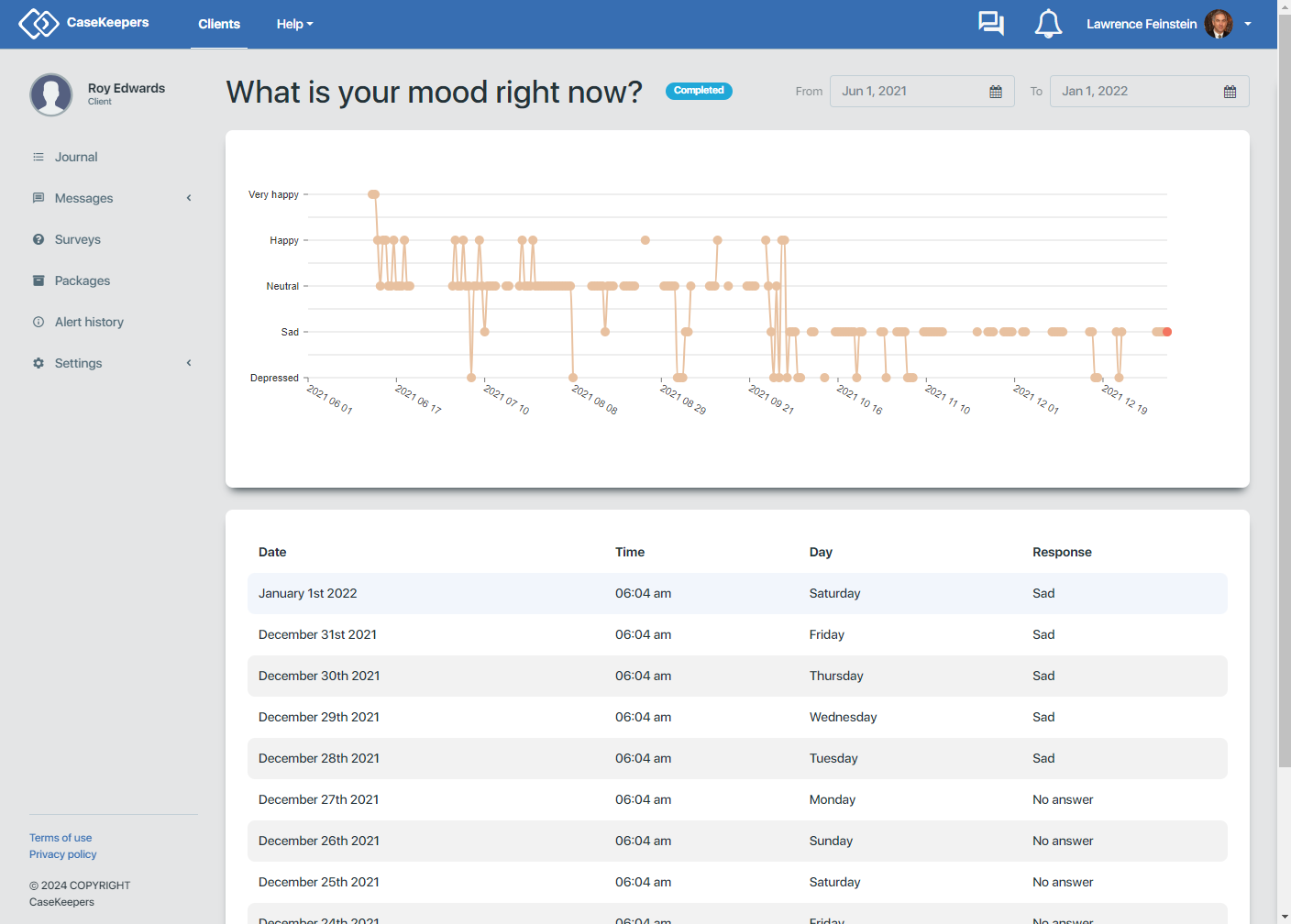
If you click on a record in the list of responses, the data point corresponding to that record will appear bright red in the graph.
This survey can be used to track depression and bipolar condition using the Alert function. You can set an alert to notify you if the client responds with less than Sad for X number of consecutive responses. For example, if you set the survey to occur once daily, and the client responds on 3 consecutive days that s/he is Sad or Depressed, you will receive an alert.
To track possible Bipolar condition, you can set a "Shifting response" alert. You will be notified if the client's responses change by X or more number of positions -- for example, from Neutral to Depressed is 2 positions, from Sad to Very Happy is 3 positions -- and these changes occur X number of times. Thus, you can receive a notification if the client responds Depressed or Sad one day and Very Happy the next and this pattern repeats itself 3 times.
